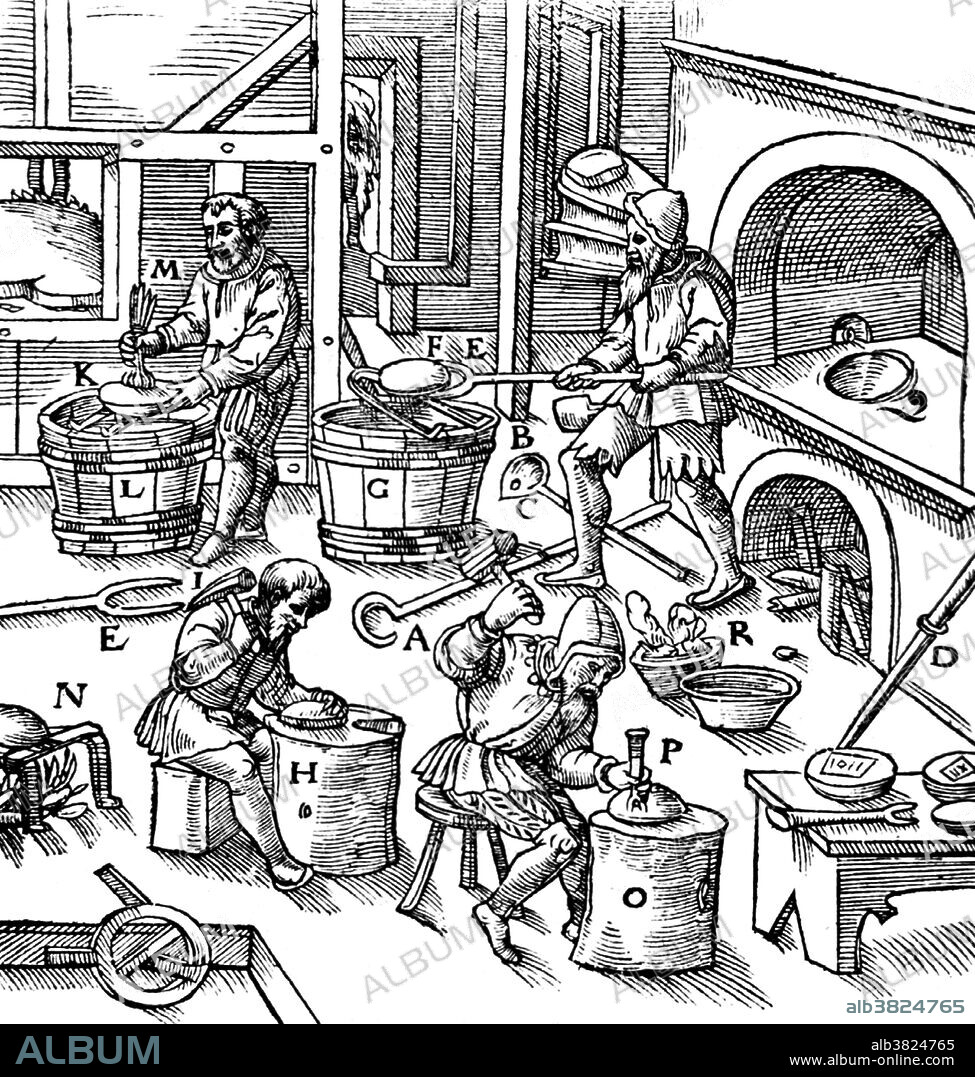alb3824765
De Re Metallica, Metallurgy Workshop, 16th Century

|
Ajouter à une autre Lightbox |
|
Ajouter à une autre Lightbox |



Avez-vous déjà un compte? S'identifier
Vous n'avez pas de compte ? S'inscrire
Acheter cette image

Titre:
De Re Metallica, Metallurgy Workshop, 16th Century
Légende:
Voir la traduction automatique
Woodcut from Georgius Agricola's De Re Metallica. Interior view of a workshop showing four men at various stages of the metallurgical process. Georgius Agricola (1494-1555) was a German scholar and scientist. Known as "the father of mineralogy". He is best known for his book De Re Metallica, published in 1556, a treatise on mining and extractive metallurgy, illustrated with woodcuts illustrating processes to extract ores from the ground and metal from the ore, and the man uses of water mills in mining. Agricola described and illustrated how ore veins occur in and on the ground, making the work an early contribution to the developing science of geology. He described prospecting for ore veins and surveying in great detail, as well as washing the ores to collect the heavier valuable minerals, such as gold and tin. It was also an important chemistry text for the period and is significant in the history of chemistry. De re metallica is considered a classic document of Renaissance metallurgy, unsurpassed for two centuries.
Crédit:
Album / NLM/Science Source
Autorisations:
Modèle: Non - Propriété: Non
Questions sur les droits?
Questions sur les droits?
Taille de l'image:
3150 x 3307 px | 29.8 MB
Taille d'impression:
26.7 x 28.0 cm | 10.5 x 11.0 in (300 dpi)
Mots clés:
16E SIECLE • 16EME S • ALLEMAND • ALLEMANDE • BOIS, GRAVURE SUR • CÉLÈBRE • CELEBRITE • CHIMIE • EUROPÉEN • GEOLOGIE • GRAVURE SUR BOIS • GRAVURE TAILLE DOUCE • HOMME DE SCIENCE • HOMME • ILLUSTRATION • PERSONNAGES • PERSONNALITÉS • PERSONNE • SAVANT • SCIENCE: CHIMIE • SCIENTIFIQUE • SEIZIÈME SIÈCLE • TAILLE-DOUCE • TECHNIQUE: GRAVURE SUR BOI • XVIE SIECLE • XYLOGRAPHIE
 Pinterest
Pinterest Twitter
Twitter Facebook
Facebook Copier le lien
Copier le lien Email
Email
